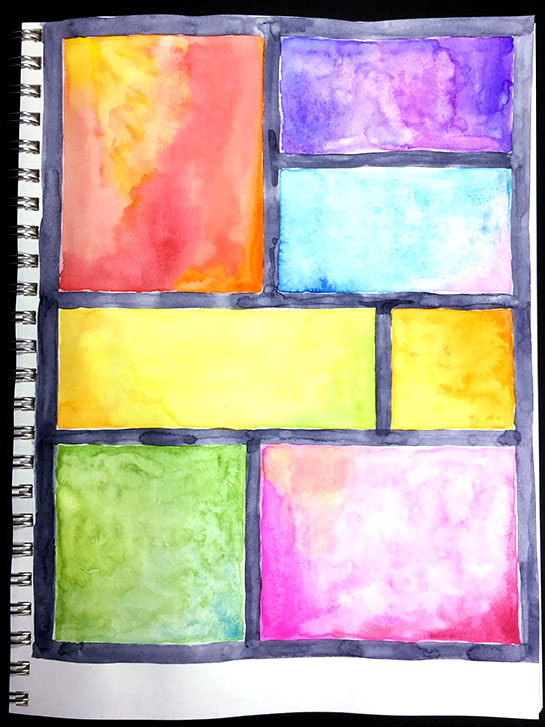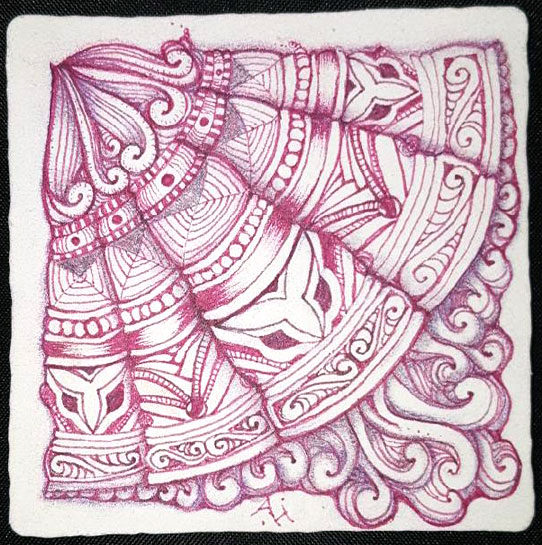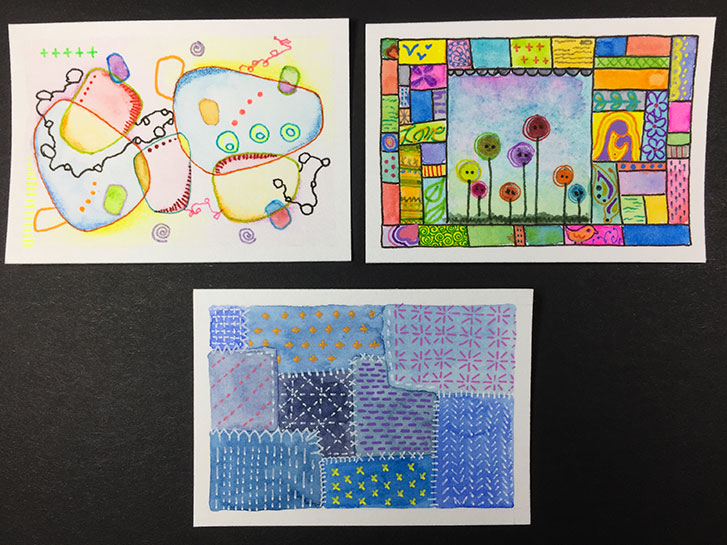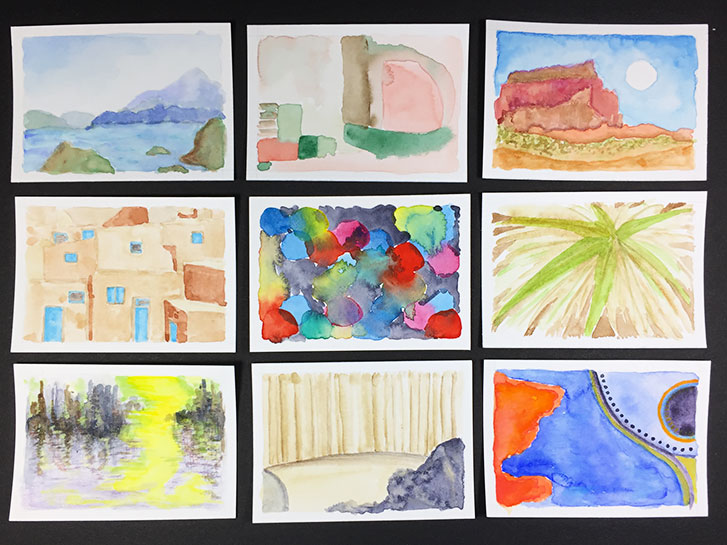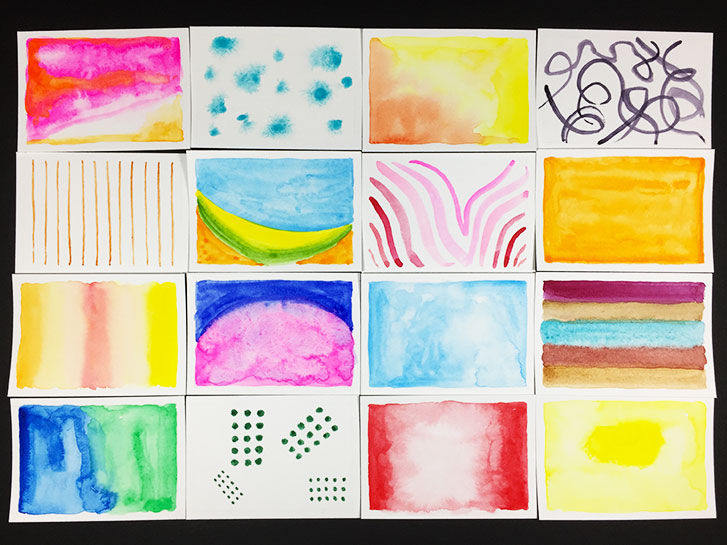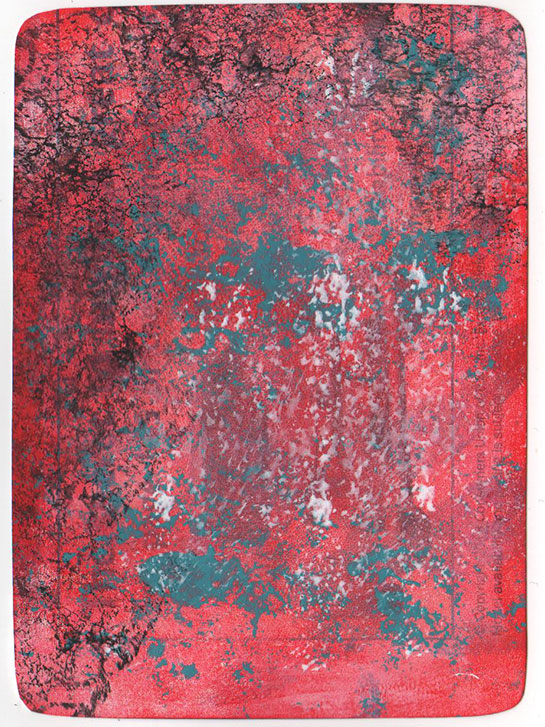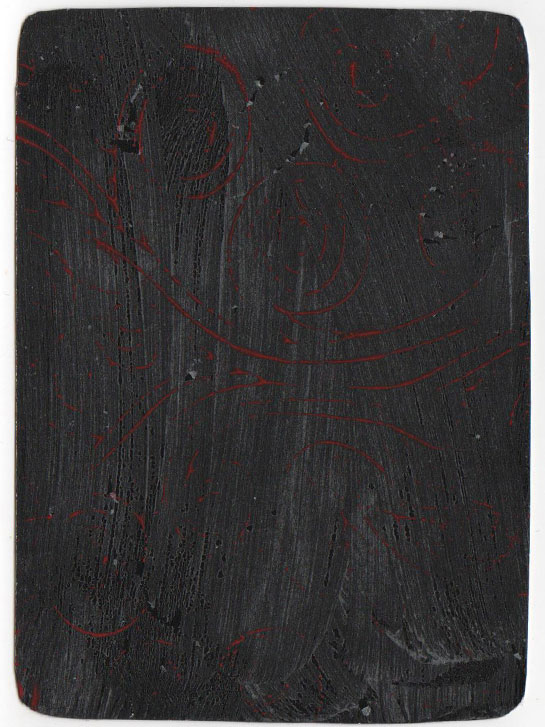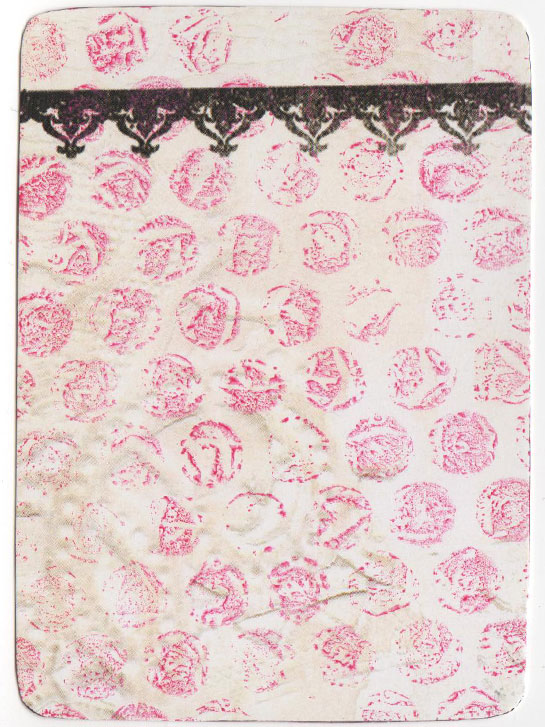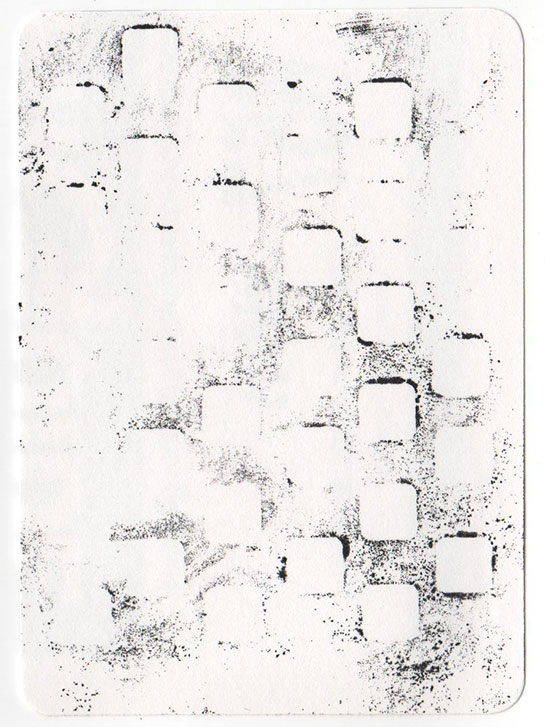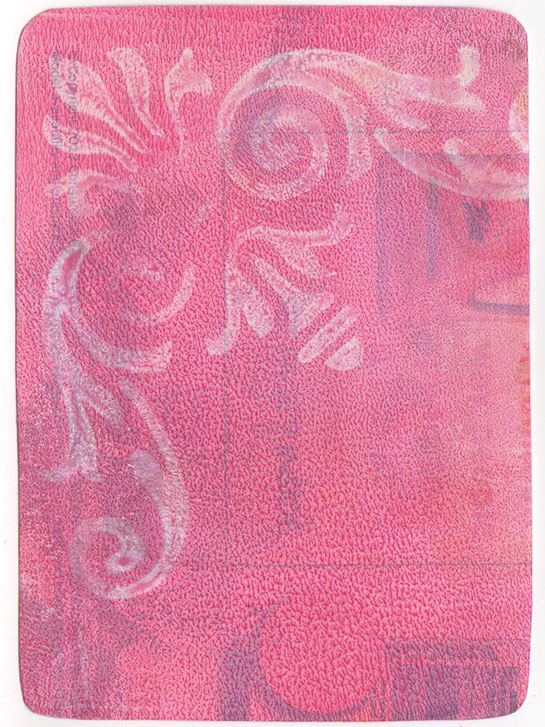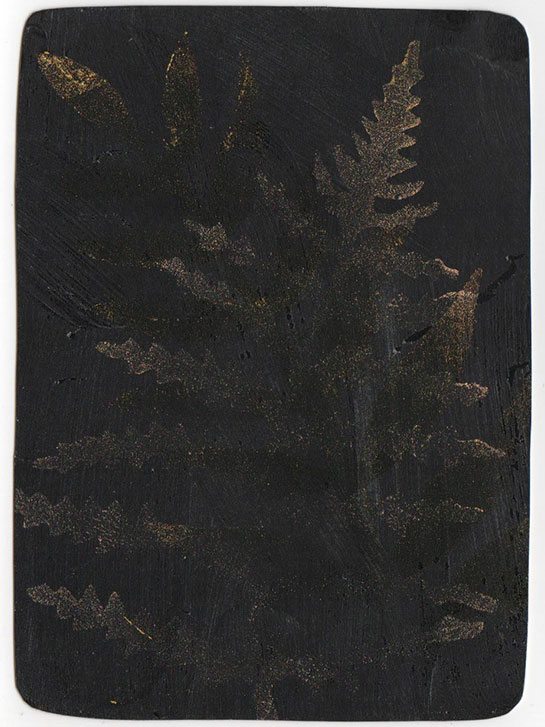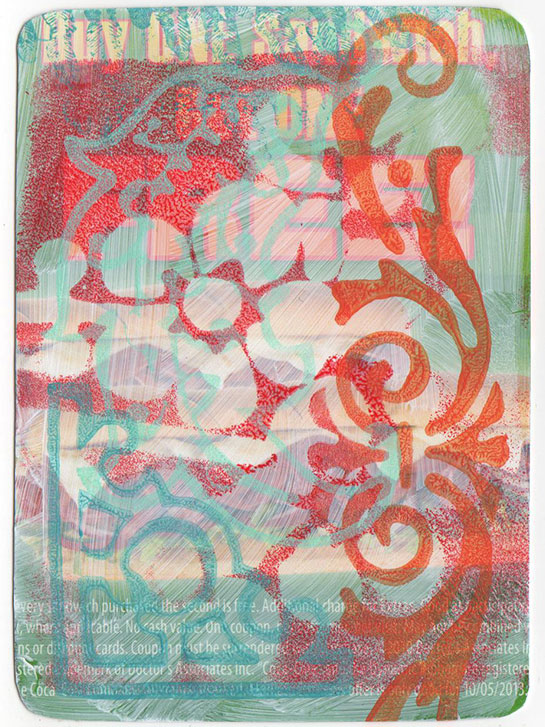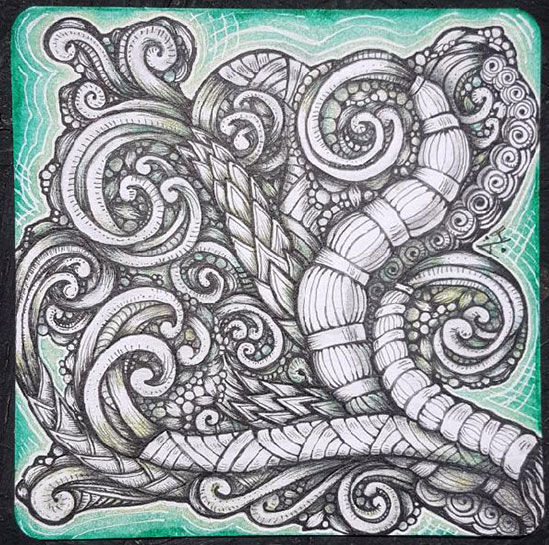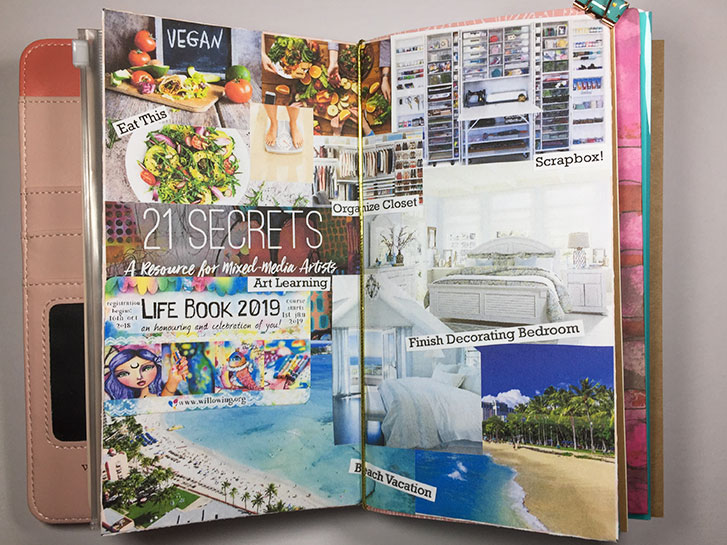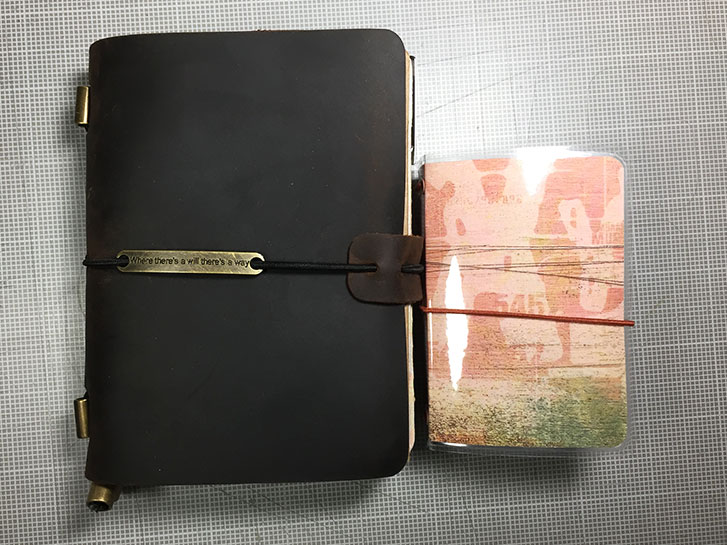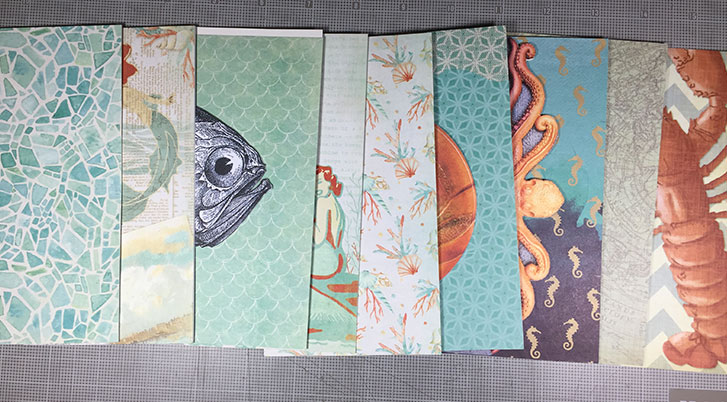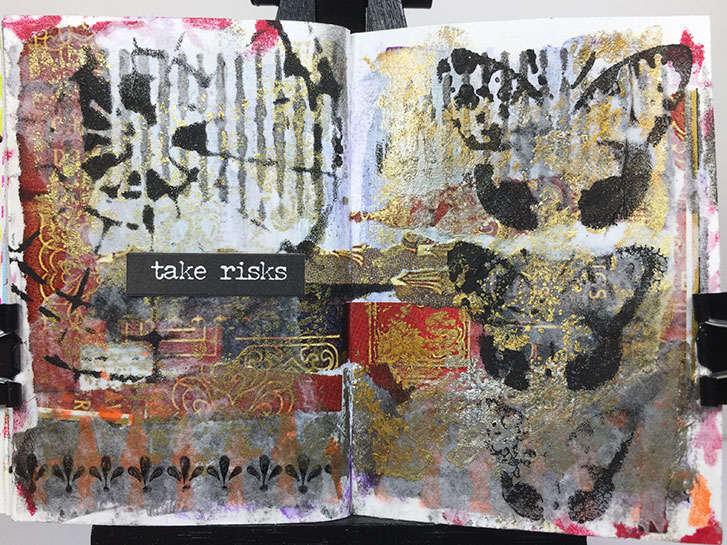Last week, I did the Daisy Yellow Tiny Museum Workshop . It was a lot of fun and allowed me to try a variety of techniques while using watercolors.
I am switching to another project which will take up several months. For part of it, I’ve started a new art journal.
I am using a Bee Super Deluxe Mixed Media book.
I’ve used these books for years as my daily sketch book. I love the paper in them. The covers are really sturdy and I’ve even taken them apart by rolling out the spiral binding and then put them back together again without any issues.
Fewer images to show you today because each one took more time.
These go beyond the workshop I am taking. I decided to go with some mixed media techniques. In addition to watercolor, I used markers and gel pens to add tiny details to these.
I have to say, I’m kind of in love with this technique!
The credit for the inspiration for these are: Artist Harriet Osborne, Cloth Paper Scissors Magazine, Japanese sashiko techniques.
Another set of tiny, abstract backgrounds. I have to let these dry over night so that I can add more to the pieces without the base layer moving all around when it gets wet.
This time, I’ve used a combination of the Winsor Newton and Daniel Smith watercolors. They are working very well together. I find that the Winsor Newton box works just fine for most of the colors. It contains a larger selection of colors, there are 27 different ones in the box. That allows me more variation without a lot of mixing.
As I mentioned last Friday, I am taking the Tiny Museum Workshop from Daisy Yellow .
One of the short videos illustrates how to blend colors together. In the process, these curvy images are created. These reminded me of banded agate stones.
I did mine, again, on individual, tiny art journal sized pieces of watercolor paper, rather than on a large sheet.
I didn’t blend these as much as the video showed. It turned out to be more difficult than you might think!
I decided to take the Tiny Museum Workshop from Daisy Yellow ! It’s a lot of fun, and I can recommend it to anyone who isn’t sure how to work with gouache and/or watercolor. You’ll get plenty of practice using either (or both!) in this series.
I decided to take it because it looked like fun, and I wanted to learn more about working with watercolors to create tiny, abstract art journaling pages.
Keyword: Stamping
Technique: Stamping with Sponges
You will need:
gessoed or painted card craft paint a variety of sponges plastic craft mat Cellulose sponges, sea sponges, closed cell sponges, makeup sponges… There are all kinds of sponges, and each one is like a fingerprint: It will produce it’s own unique pattern when used to stamp paint. You could actually make an entire painting with just sponges!
The technique for this is simple. Add a drop of paint to the craft mat. Pick up a tiny bit of paint with the chosen sponge. Lightly tap the sponge in a clean spot on the mat to spread it out on the sponge. Then stamp the sponge on the card.
Keyword: Stamping
Technique: Stamping with Household Objects
You will need:
gessoed or painted card craft paint various household objects brayer, paint brush plastic craft mat There are all kinds of household object that can be used to transfer paint onto your project and create texture. I keep a cupboard in my studio that is full of odd things, such as a sushi mat, a plastic doily, some pieces of shelf liner, corks, and other things that you might question being in an art studio.
Keyword: Stamping
Technique: Stamping with Bubble Wrap
You will need:
gessoed or painted card craft paint bubble wrap brayer, paint brush plastic craft mat Using bubble wrap for mixed media art is not new. It’s pretty much considered a basic in the bag of artistic techniques.
You can get bubble wrap for free. It comes along with all kinds of other packing materials. If you don’t have any, you can probably find some in the trash behind almost any kind of mall or shopping center. (Note: I am not advocating dumpster diving… just sayin’.)
Keyword: Stamping
Technique: Stamping with a Stencil
You will need:
gessoed or painted card craft paint stencil brayer, paint brush plastic craft mat For the first card, above, I put a couple of drops of paint on the craft mat and then used the brayer to pick it up and apply it to the stencil. Then I stamped the stencil on the card.
For this second card, I added some water to the remainder of the paint, picked it up with the brush and added it to the stencil. Then I stamped the stencil on the card.
Keyword: Stamping
Technique: Subtractive Stamping
Instead of adding paint to the card with the stamp, this technique removes it with a stamp!
You will need:
gessoed card craft paint foam stamps brayer plastic craft mat I put a couple of drops of craft paint on the mat and used the brayer to apply paint to the card until it was covered.
I immediately stamped a clean, dry, foam stamp on the card and removed it.
Keyword: Stamping
Technique: Stamping with metallic paint
You will need:
gessoed card metallic craft paint foam stamps brayer plastic craft mat I used foam stamps again. I put a drop of paint on the craft mat and then used a brayer to apply craft paint to the stamps. Then I stamped on the card. These are the same techniques that I used with yesterday’s technique card.
I actually did this twice, once on black and once on a card that was painted with craft paint over the gesso.
The key-word for the first set of cards is “Stamping”. This first card illustrates stamping in it’s simplest form: stamping with paint on the card.
To create your own version of this card you would need:
gessoed card craft paint foam stamps brayer plastic craft mat I used foam stamps (as opposed to regular rubber or clear polymer.) I put a drop of paint on the craft mat and then used a brayer to apply craft paint to the stamps. Then I stamped on the card.
I’ve chosen my art project for the month of May! I will be making “technique cards”. These are cards that serve as a kind of reminder and dictionary of the various possible techniques that can be used in art journaling or image making.
To be truthful, I started this project a few years ago. I began by gathering up all the junk mail that comes in, random pieces of card stock and cardboard and anything else that could be used as a card base.
I follow the Traveler’s Notebook Forum on Facebook. It’s one of those places I check every day just to see the eye candy.
This week, they’ve started their 5th Anniversary Celebration with lots of challenges and prizes.
The first challenge is to create a Vision Board insert for your Traveler’s Notebook. This seemed like a perfect thing to do for my classic-size, Webster’s Pages, soft pink TN.
I used scrapbook paper to create the folder initial folder. Then I used various images for the board that represented my current goals.
I get asked all the time: “How small IS your art journal.” Well, they say a picture is worth a thousand words…
However, I’m still going to say a few! On the left is my Passport Traveler’s Notebook from Chris.W on Amazon.
On the right is the A8-sized Traveler’s notebook that I use as my art journal.
As you can see, the A8 is much smaller, and the inserts are even smaller than the cover.
I realized that I forgot to show you all the pages that I made for the Mermaid Book!
Right now, they don’t have anything much on them, but you can see the bases for the right-hand pages above.
And this is what the back side of each of them looks like!
I hope that over the next two weeks, I can finish at least some of them!
This layout, in my Tiny Traveler’s Notebook Art Journal, is all about taking risks.
It started with a page from a magazine that featured images of the spines of books, decorated in gold. I loved the rich, old-world, wealthy, royal look of them. They reminded me of a castle library somewhere in England.
So, I decide to use regal colors of purple, red and gold to paint on the page. I really didn’t like it after I did it because the purple was intense and transparent and just looked messy to me.
